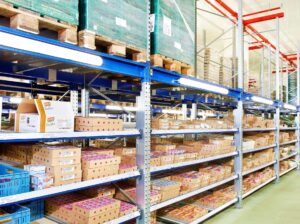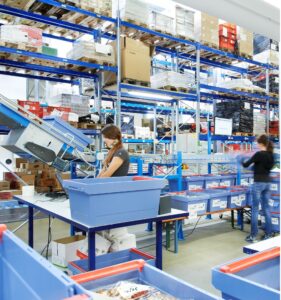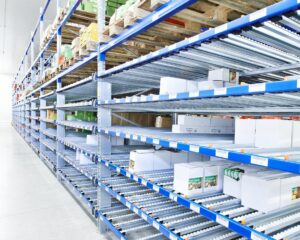
By using optimized storage systems, you can therefore win new customers for your online grocery store. Customers who are purchasing (or want to purchase) groceries online have two requirements in particular: goods must be guaranteed fresh and home delivery must be fast and free.
Consumers in Germany spend approximately 215 billion euros on food, drinks and tobacco products every year. They are currently still relatively cautious about buying groceries online, compared with products from non-food sectors (particularly fashion, electronics and media). 
The most popular grocery products online are long-life luxury products such as wine, coffee, tea, confectionery or specialties that are hard to find elsewhere. The drinks and deep-frozen food sectors also offer potential: customers have been ordering such products to their homes since long before the rise of the Internet. For all other types of groceries, such as fresh produce or dairy items, e-commerce still represents a low percentage of overall sales. 
However, the proportion of those who would in theory be interested in buying groceries or other day-to-day products online reached 19% in 2016, and this figure has been trending upwards for years. (Source: Statista)
According to the studies, these (potential) customers want free delivery and a fixed delivery window in as short a time as possible.
Aside from basic considerations such as delivery areas, warehouse locations and so on, online retailers in the e-food sector must also ask themselves how they can optimise their logistical processes to meet the demand for faster, free delivery of fresh goods in order to win new customers.
The answer is to choose the right storage system, thus creating the right conditions for keeping delivery times as short as possible. In order for free delivery to be a viable option, online retailers need to implement as many cost-saving measures as possible.

Example: BITO carton live storage systems
Fresh produce represents the high-turnover element (the so-called “fast-moving consumer goods” or FMGS) in an online retailer’s product range. As a result, live storage systems which replace solid floors with rollers are growing in importance. Since goods automatically replenish themselves on each shelf, this enables constant item availability.
This system functions on the “operator-to-goods” principle. Live storage systems are also ideal for supplying cartons in the e-food sector. They enable storage and picking on a FIFO basis: goods are sorted by expiration date, and the picker always reaches for the product with the nearest best-before date. This is essential in the grocery sector, including in online retail.
The use of carton live storage allows businesses to drastically cut down travel times (between 40% and 70%) compared with conventional shelving. The amount of floor space required is also reduced by up to 30%. These factors can save e-commerce retailers significant amounts of money. Long, straight working aisles reduce time spent correcting picking errors, significantly improving employee productivity.
The costs of procuring a live storage system pay off quickly. It will reduce delivery times and save money which can therefore be shaved off shipping fees – helping to win customers as a result.






